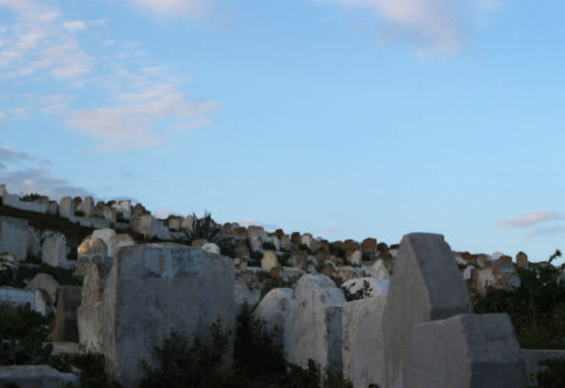In remote villages by the Atlas Mountains, locals would avoid roaming the streets after nightfall. After long days of herding, farming, and tending to cattle, villagers would be exhausted, but that wasn’t the only reason why our forefathers kept to their homes after sunset.
It was mainly because of her—the half-human, half-jinn woman, or perhaps more fittingly, a beast. Legend says that she was once a devoted wife, living happily with her husband. But as with many local horror stories, the happy ending didn't last. After losing her husband, she found a lover instead of mourning her loss in the traditional way.
As a result of her infidelity, she was cursed and transformed into a beast. Some Amazigh tribes say she turned into a giant mule that roams cemeteries, terrifying villages at night. Others claim she became half-woman, half-mule—or even a female horse.
This is where she earned her notorious name: «Tagmart n Ismdal», meaning «the mare of the graveyard» in the Souss region, or «Taserdunt n Ismdal», the mule of the cemetery.
She haunts cemeteries and emerges at night to prey on loners—those who dare to wander the streets after dark or those who challenge social norms. Most of her victims are men, according to ethnographers who have collected various versions of this eerie tale.
«Every cemetery had a jenniya who appears in the evening in the shape of a mule», writes Finnish sociologist Edward Westermarck in his book «Ritual and Belief in Morocco». Westermarck, who lived in Morocco from 1898 to 1926, learned about local customs and superstitions, including this legend.
Haunting Moroccan graveyards
This monster is «very seldom seen», but many have heard her voice, which resembles that of an ordinary mule. She also carries an object around her neck, which makes a rattling sound, as though made of silver or iron, Westermarck reports.
Those unfortunate enough to see or hear her often fall ill, go mad, or die. The Ait Temsaman tribe in the Rif, between Hoceima and Nador, call her «tasadunt imdran», meaning «the mule of the cemetery». In Iglwa or Glaoua, in the High Atlas, people believe that if anyone sees her and tries to ride her, she takes them to the cemetery and digs their grave with her feet.
One legend tells of a man who owned a pasture near a graveyard. Each day, he noticed that some animal had been eating the grass. Determined to find out what was happening, he spent the night there. He soon saw a very fat mule grazing. When he tried to ride the mule, it raced toward the cemetery and began digging the ground. The man, however, escaped and climbed a tree, where he stayed until morning prayers, when evil spirits are said to vanish from the earth.
Westermarck also heard stories of people being taken to cemeteries by the mule but surviving her evil attempts. In Aglou, a small town in the Souss region, locals speak not of a mule but of a mare. At night, this mare can be heard making noise with an iron chain in the cemetery. However, it’s only «bad people» who hear this noise, and some die from fright, he notes.
Even cities are said to have encountered this jinn-mule. In Fez, the jenniya is known as «Bghilt Lil», or «the little mule of the night». She appears at night, her body covered in gold. If someone tries to attack her to steal the gold, she knocks them down—unless they carry a book with Koranic verses or a dagger, which frightens her.
In other parts of the country, «Baghlat Laqbur» (the jinn-mule of tombs) is said to devour people and vanish at dawn, only to return again when darkness falls. So, beware of where you walk at night.





 chargement...
chargement...













